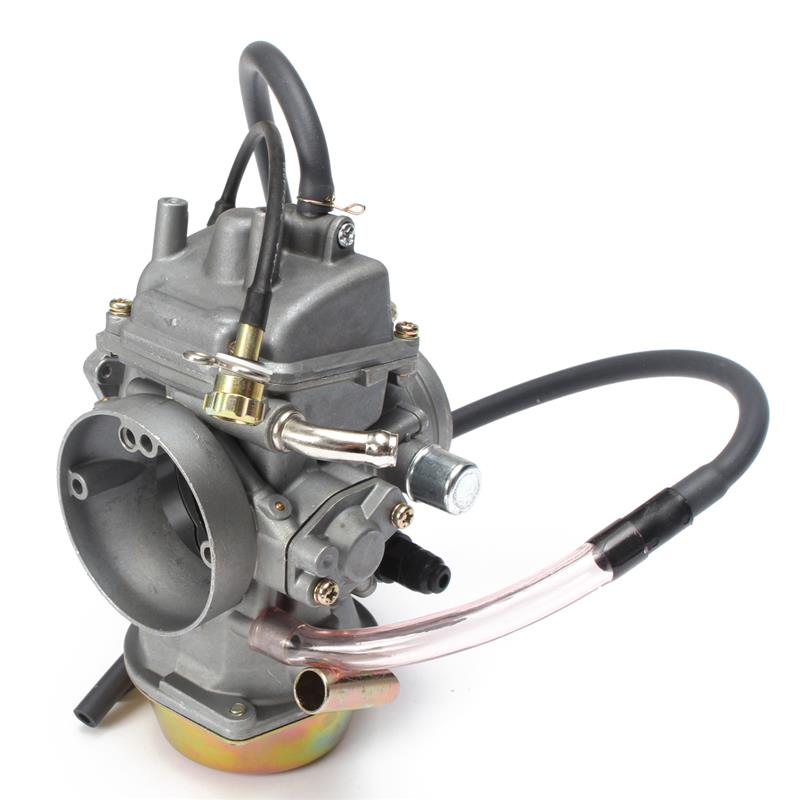The Yamaha Grizzly ATV boasts of the best power-to-weight ratio of any Yamaha utility ATV. This bike comes equipped with a fully automatic Ultramatic transmission, considered as the most advanced drive system in ATVs. With an advanced digital instrument panel and a multifunction LCD display, it is essential that Grizzly owners maintain and make sure their ATVs are clean, inside and out.
A clean, well-tuned carburetor is a key factor in the performance of your Yamaha Grizzly ATV and nothing makes cleaning carburetors faster, safer and easier than an ultrasonic cleaner. Whether you operate a Yamaha Grizzly ATV service shop or do it yourself, you’ll be amazed at just how thorough an ultrasonic cleaner can be in removing varnish, grease, oil and other contaminants from one of the most intricate assemblies on your Yamaha Grizzly ATV.
Ultrasonic cleaners are used in a wide range of applications to remove virtually any soil or contamination by using the power of cavitation action. This is the term used to describe the implosion of billions of minute bubbles contacting carb parts being cleaned. The bubbles are created by generator-powered ultrasonic transducers bonded to an ultrasonic cleaning tank and typically operate at an ultrasonic frequency of 37 to 42 kHz (37,000 to 42,000 cycles per second).
When the bubbles implode contaminants are quickly and safely blasted away from wetted surfaces without damaging delicate carb parts. So tiny are the bubbles that they penetrate minute cracks, crevices and blind holes impossible to reach by hand scrubbing using conventional parts washers or aerosol sprays The ultrasonic cleaner from iUltrasonic will complete the job in less than an hour, meanwhile freeing you up to attend to other tasks. And it will do it in an environmentally friendly manner because the ultrasonic carburetor cleaning formula is a biodegradable concentrate that minimizes disposal problems.
Ultrasonic carb cleaners come in a variety of sizes from bench top units to a floor-mounted industrial ultrasonic cleaning machine, so you can select any size you need.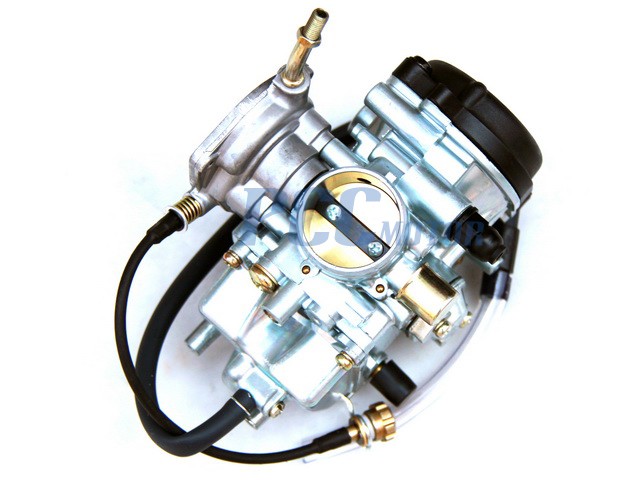 Our most popular 1½ gallon models for cleaning one carburetor at a time are the TOV150-6L and Eh250EL. Select an ultrasonic carb cleaner equipped with a heater to improve the ultrasonic carburetor cleaning process.
Our most popular 1½ gallon models for cleaning one carburetor at a time are the TOV150-6L and Eh250EL. Select an ultrasonic carb cleaner equipped with a heater to improve the ultrasonic carburetor cleaning process.
Whether you own a benchtop ultrasonic cleaner or a larger ultrasonic model,there are important steps to take before cleaning begins.
Step 1: Removing the Carburetor
First, you have to get the seat off by pulling the seat lock lever upward and pulling the seat up at the rear. Remove the four screws that hold the fuel tank cover. Take the fuel cap off first then completely remove the fuel tank cover. There are fuel tank bolts located at the back, front left and front right. You will have to remove these. The bolts located at the left and right can be easily removed from under the fender. Remove the fuel line from the tank and the fuel tank should come right off.
Remove the four screws that hold the fuel tank cover. Take the fuel cap off first then completely remove the fuel tank cover. There are fuel tank bolts located at the back, front left and front right. You will have to remove these. The bolts located at the left and right can be easily removed from under the fender. Remove the fuel line from the tank and the fuel tank should come right off.
Once the tank is off, there should be two allen bolts connecting the intake boot which have to be removed. Using a screwdriver, loosen the screws and remove the black cover from the side of your Yamaha Grizzly ATV carb. To detach the throttle cable from the carburetor, bring the lever up and the cable through the gap. Pull this out gently and grab the tiny washer so that you won’t lose it.
Remove the nut securing the back of the carb to the whole assembly. The fuel hose must also be disconnected from its connector. Using a screwdriver, remove the screw on top of the intake boot air filter. Pull your Yamaha Grizzly ATV carburetor to get the studs out of the intake manifold. The carb should come off easily with just a few pulls and turns.
Pull your Yamaha Grizzly ATV carburetor to get the studs out of the intake manifold. The carb should come off easily with just a few pulls and turns.
Once your Yamaha Grizzly ATV carburetor is off, use a screwdriver to remove the screw holding the throttle bracket on the carb. Pull the throttle cable gently and it should slide right out.
You now hold in your hand, your Yamaha Grizzly carb.
Congratulations! You have successfully removed your Yamaha Grizzly carburetor from your ATV! You may now proceed with the next step.
Step 2: Cleaning the Carburetor
Although you can clean your carburetor without any disassembly you will achieve the most thorough cleaning with partial disassembly to allow the solution into the float chamber. Remember that only surfaces that are wetted by the cleaning solution will be cleaned. Fine mesh baskets can be used to hold very small parts.
Set the thermostat to 70°C. While the solution is heating, place your carburetor parts in the basket taking care that they do not touch each other. Once the operating temperature is reached lower the basket into the cleaning solution and set the timer for 40 minutes. Cleaning time depends on the condition of the carburetor and may have to be adjusted.
While the solution is heating, place your carburetor parts in the basket taking care that they do not touch each other. Once the operating temperature is reached lower the basket into the cleaning solution and set the timer for 40 minutes. Cleaning time depends on the condition of the carburetor and may have to be adjusted.
At the end of the cycle remove the components from the bath. If they are not clean replace them in the bath until the cleaning is complete. Then rinse them in fresh water to remove all traces of the cleaning solution and allow them to dry.
Safety note: DO NOT reach into an operating ultrasonic bath. Instead remove the basket if you want to inspect or rearrange the parts.
Step 3: Reinstalling the Carburetor
To reinstall the Yamaha Grizzly ATV carb, firstly, return the throttle cable and slide the needle back inside making sure that the throttle needle and spring will not budge..jpg?x-oss-process=image/auto-orient,1/quality,q_70/resize,m_mfit,w_350,h_350) Screw the throttle bracket back on the carburetor. Return the carb to its original spokes in the intake manifold. Push it in place until it stays firm and secure.
Screw the throttle bracket back on the carburetor. Return the carb to its original spokes in the intake manifold. Push it in place until it stays firm and secure.
Screw the top of the intake boot air filter back on and return the fuel hose to its connector. Secure your Yamaha Grizzly ATV carb to the assembly by securing the nut found at the back of the carb. Attach the throttle cable back into the carburetor by bringing the lever up and inserting the cable through the gap. The washer that you removed should be placed, just as you found it, inside as well.
Return the black cover of the carb and screw it on. Secure the two allen bolts connecting the intake boot. Place the tank in its original position and connect the fuel line back to the tank. Next, secure the bolts located at the back, front, left and front right of the tank. The bolts located at the left and right can be easily removed from under the fender.
Unscrew the fuel cap off, return the tank cover, and then close the opening with the fuel cap again.
Secure the four screws that will hold the fuel tank cover back on. Put the seat back on your ATV by pulling the seat lock lever upward and pushing the seat until it locks in place.
Admire the piece of work you just put back together.
Voila! Start the engine, and your Yamaha Grizzly ATV should be good to go.
Oils that rise to the surface of the bath should be skimmed off and disposed of properly. When the solution becomes discolored or cleaning time takes longer it is time to replace it. Drain the tank and dispose of the spent solution according to local regulations. Take the time to remove sludge that settled to the bottom of the tank. Clean the tank using a cleaning process recommended by the manufacturer.
Questions: Contact the iUltrasonic ultrasonic cleaning experts at 973 821-4400 to find the best ultrasonic cleaners for you!
Disclaimer: This advice is not provided by a licensed mechanic.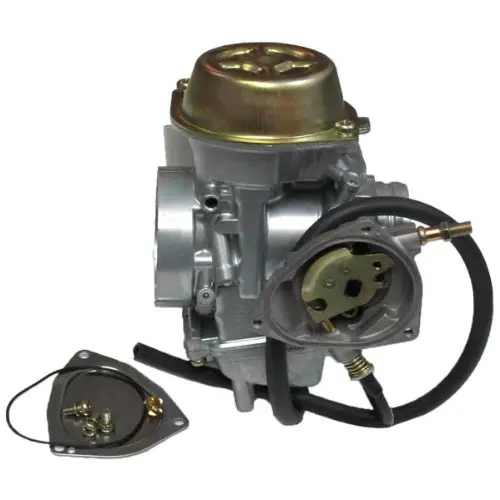 Follow at your own risk. We assume no liability for any damages caused by following the advice in this article.
Follow at your own risk. We assume no liability for any damages caused by following the advice in this article.
If your ATV engine is not getting enough fuel, it won’t run properly. You’ll notice it bogging down and just not having the power it used too. If you’re not getting fuel to the engine at all, it won’t even start for you.
The most common reason an ATV engine is not getting fuel usually has to do with the carburetor. Either a stuck needle valve or a loose or cracked vacuum hose are the most common issues. Don’t worry, there are pretty straight forward things you can do to check where your problem is.
There are a few different reasons you may not be getting fuel to your engine. It’s not that hard to check the parts to see if their working properly. I recommend going step by step checking one thing at a time, eliminating possible issues as you go.
If you have a fuel injected engine, you can skip this next part and jump straight to the fuel injectors, fuel pump, and compression check sections.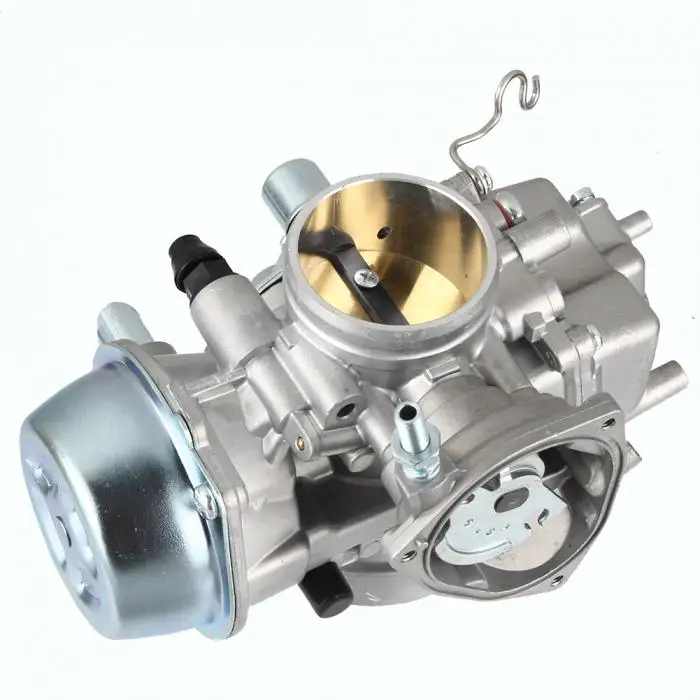
I would first check the carburetor to help narrow down where you should start your investigation. All you need to do is spray a little carb cleaner or ether down the carb and see if your engine will fire up with that. Or you could pour a little gas in the carb and try to start it up.
If it does start, and then dies right away, at least we know now it’s a problem getting fuel to the carb. We know that now because, when the carb has fuel, the engine will run. You should check to make sure fuel is getting to the carb now.
If it still doesn’t start at all, you may have a problem getting fuel from the carb to the engine. That is telling us the problem is further down the line. It could be an issue with compression if that’s the case.The engine doesn’t have enough compression to pull in the fuel it needs and stay running. I will go over how to do a compression check later in this article.
Another check to do with the carburetor is to adjust the idle mixture screw.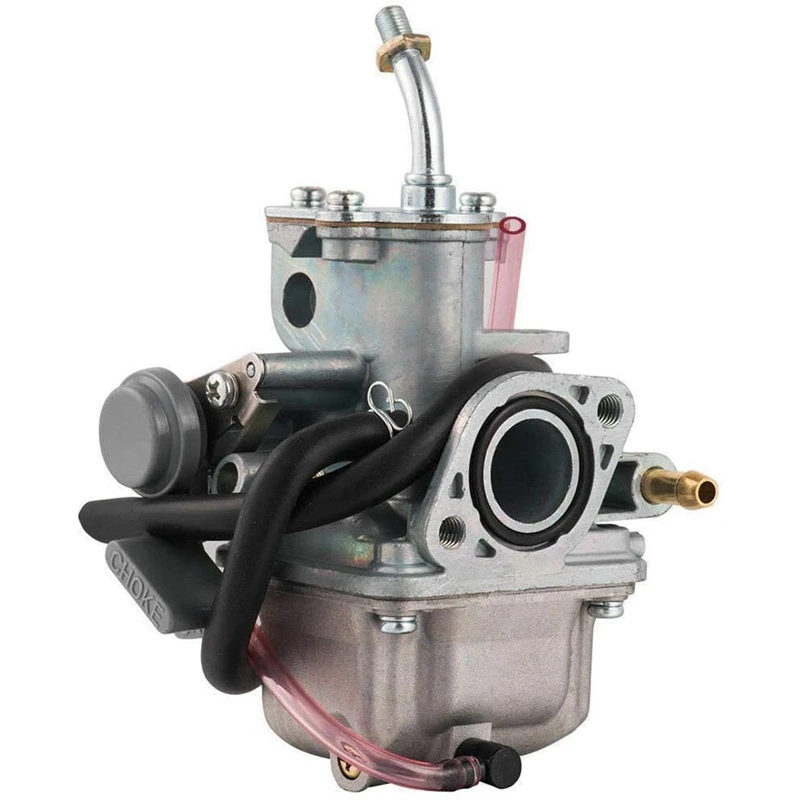 I know it sounds too good to be true, but a lot of times this adjustment isn’t set right so the engine isn’t getting the right air/fuel mixture to run properly.
I know it sounds too good to be true, but a lot of times this adjustment isn’t set right so the engine isn’t getting the right air/fuel mixture to run properly.
Ok, you sprayed something into the carb and the engine started up for a few seconds. Great, now we need to make sure the carb is getting the fuel it needs for the engine to run. Disconnect the fuel line going into the carb and put that end into a bucket or something to catch the fuel.
You may need to take out any spark plug, or just unplug them, just in case. And try to start the engine and look to see if fuel is coming out of that fuel line. If there is, then you have no problems getting fuel from the gas tank and it is probably a needle valve or float problem.
If there’s no fuel coming from the tank down that fuel line, then you’re problem may be an issue with the fuel pump, if you have one, or an obstruction in the fuel line or shut off valve. I will go over how to diagnose the fuel pump later in this article.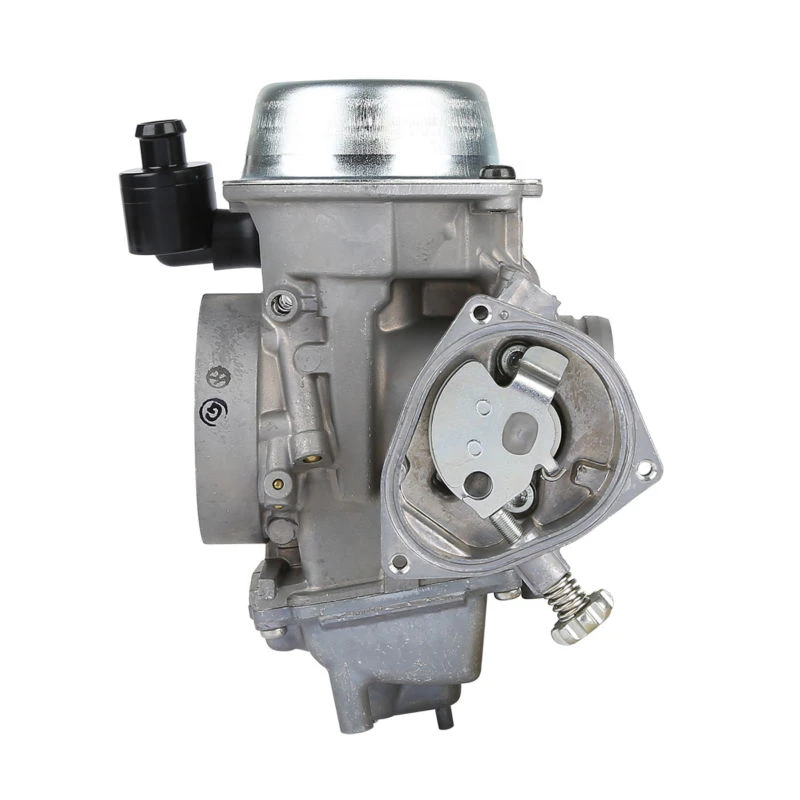
If the needle valve in your carb is corroded, it will not allow fuel to flow to the engine properly. Same thing will happen if your float is getting stuck. You’re going to need to clean the carburetor and possibly replace those parts if they’ve gone bad.
First remove the float bowl to gain access to the carburetor insides. Then you can remove the pin holding the float in place. Before you do that, you can try moving the float up and down with your hands, the float should move freely and have no resistance feeling when moving it.
The needle valve will be attached to the under side of the float, here is a picture of what you’re looking for. You can try cleaning the needle valve using carb cleaner. Just soak the thing and let it sit in carb cleaner for a few hours.
If that didn’t help, or you just don’t want to do it, no big deal. Needle valve are pretty cheap online. Here’s an example of a Carburetor Float Valve Needle on Amazon to give you an idea of what you’re looking for.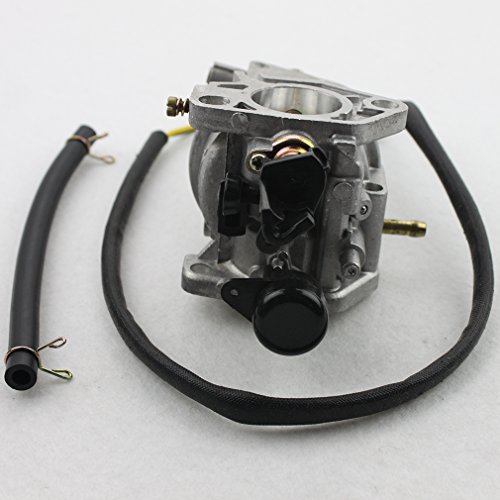
You can also replace the float if you want to, usually you don’t have to but i would give it a good cleaning. Double check all the seals and everything since you’ve got the carb open, and clean out everything really good.
Remove Needle Valve SealCheck the bowl gasket, if this was bad, you would have noticed the carb leaking fuel before. To check and replace the valve seal, you’ll need a pick or something to pull it from the carburetor. I’ve used a sheet rock screw before. Just thread the screw in a little and pull out the seal.
Check out the picture for an idea of what you’re looking at. Once you’ve removed the old seal, insert the new one and make sure it’s seated all the way.
You can do that with a metal punch or something, just make sure you don’t hit too hard because you could break the aluminum frame of the carb. Reassemble with new needle valve and you should be good to go.
Fuel injectors can get gummed up after a while if they aren’t cleaned regularly.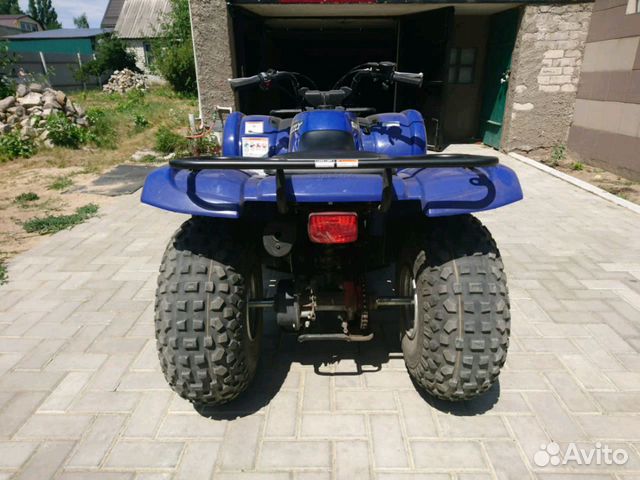 The end of the fuel injector has small holes in it that the fuel passes through, creating a spray that enters the cylinder. If those holes get gummed up, the spray will be off, and you’re engine won’t run.
The end of the fuel injector has small holes in it that the fuel passes through, creating a spray that enters the cylinder. If those holes get gummed up, the spray will be off, and you’re engine won’t run.
If you think it could be a problem with your fuel injector, I’d recommend trying to clean them first before buying new ones because they can be pretty expensive. First, you’ll have to remove the fuel lines that hook to the fuel injectors.
You could always remove the fuel injectors completely and let them soak in some fuel injector cleaner. I use this B-12 Chemtool Thru-Rail Fuel Injector Cleaner but you can use any carb cleaner / fuel injector cleaner you want to.
If you don’t want to remove the fuel injectors completely you can try another method. You will still need to remove the fuel lines and let all the gas drain out of them. You will then fill the fuel line with fuel injector cleaner, and then reconnect the fuel lines.
Try starting the engine for at least 20 seconds.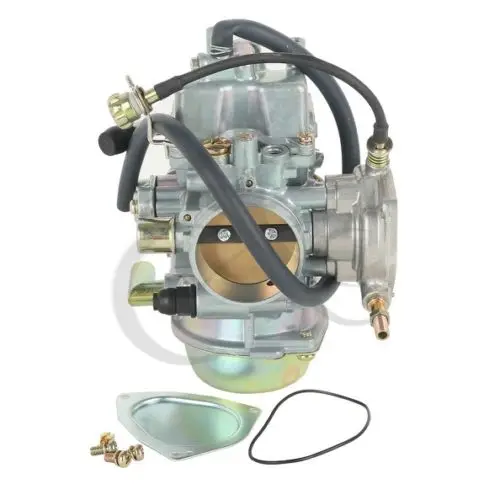 If it does start, don’t let it run for longer than 20 seconds. Then you want to sit and wait about 10 minutes or so. You need to give the fuel injector cleaner time to do its work. Repeat the process five more times, but only try to start for 10 seconds, and then let sit for ten minutes.
If it does start, don’t let it run for longer than 20 seconds. Then you want to sit and wait about 10 minutes or so. You need to give the fuel injector cleaner time to do its work. Repeat the process five more times, but only try to start for 10 seconds, and then let sit for ten minutes.
I know it’s not the official way to clean the injectors, but I’ve seen it work, and it can save you from all the work of removing the injectors. Once you get the quad running, you’re going to want to add a fuel additive to your gas to keep the injectors clean.
You should be doing this at least once a year anyway. I do it with my maintenance checks before spring begins every year. I usually just add some of this Gumout Complete Fuel System Cleaner to the gas tank before I start it up for the season.
I would say to try blowing air through the fuel pump to make sure fuel will be able to flow freely through it. But if you have a vacuum operated pump, you won’t be able to do that.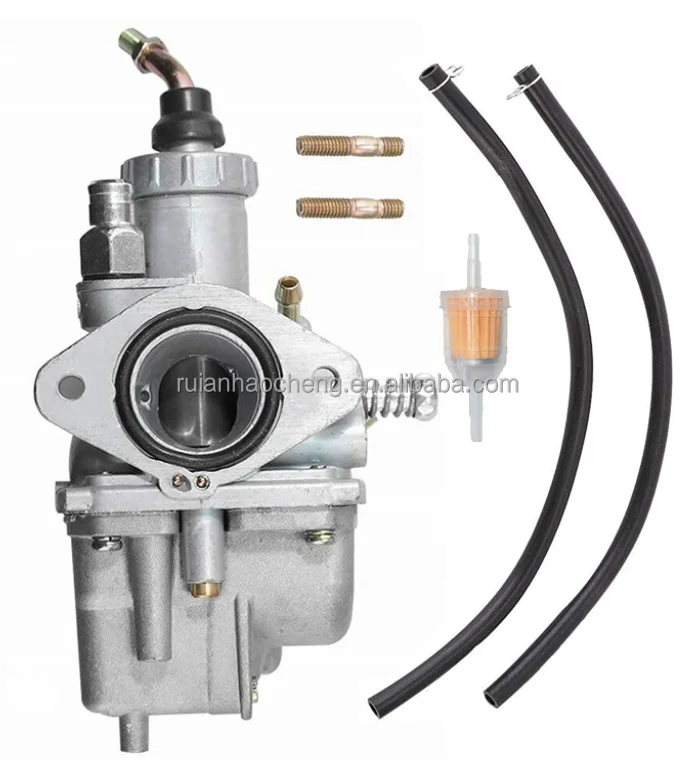 There are diaphragms in there that could get damaged.
There are diaphragms in there that could get damaged.
To make sure you’re vacuum operated fuel pump is working correctly, pull the vacuum line to the fuel pump off and crank the engine. You should feel a good amount of suction at the mouth of the carb.
The engine crates a vacuum pulse to the fuel pump, which in turn creates an amount of pressure that pushes fuel into the carburetor. If you’re not getting good suction, try replacing the diaphragms in your fuel pump and make sure your vacuum lines aren’t cracked.
If you can, try cleaning the fuel line out and replacing the fuel filter to make sure you’re getting fuel to the carburetor. Inspect the fuel pump for wear and loose or cracked hoses. If there is no vacuum in the hose, you’re carb won’t get any fuel. This is most likely caused by a crack in the vacuum fuel lines or a bad fuel pump.
You may find it easier to just replace the fuel pump all together since they aren’t usually very expensive.
The compression check is pretty straight forward, you’re trying to see if you’re engine can handle the right compression to run properly.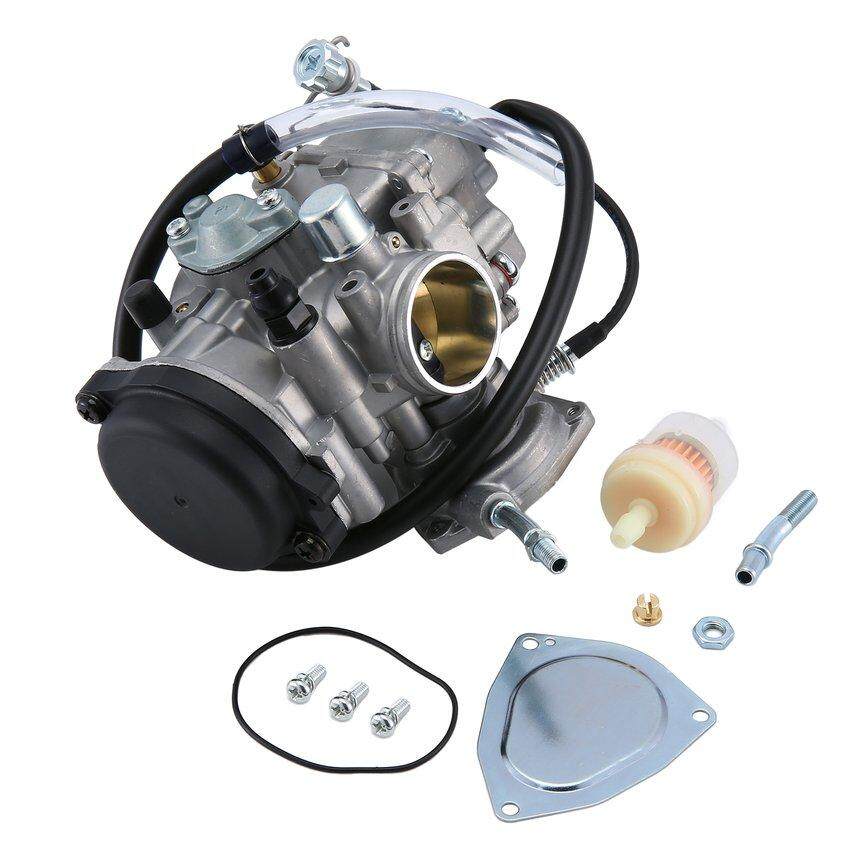 Without compression, you won’t get fuel and your ATV won’t start.
Without compression, you won’t get fuel and your ATV won’t start.
The steps are pretty simple if you have a compression tester kit. Basically, you remove the spark plug, hook up the compression tester and run the test. You just have to make sure your engine is at the down stroke in the compression cycle.
I go over this process in a lot more detail and explain step by step how to perform this test in my article, Top 7 Reasons An ATV Smells Like Burning Oil. If you weren’t getting good compression, but enough that the quad still ran, you would leak oil into the cylinder. Go to that article and scroll down to the leak down test section for a step by step guide on checking for compression.
Sharing is caring!
In order for the ATV to work like a clock, the rider needs to regularly carry out a complete maintenance of the equipment. And a key element of maintenance is ATV carburetor adjustment. Over time, the system starts to work incorrectly, which increases fuel consumption, worsens dynamics and other problems appear. So how do you adjust an ATV carburetor?
And a key element of maintenance is ATV carburetor adjustment. Over time, the system starts to work incorrectly, which increases fuel consumption, worsens dynamics and other problems appear. So how do you adjust an ATV carburetor?
The operation and life of the engine directly depends on the quality of the fuel mixture. The carburetor is responsible for the preparation of the composition, but after prolonged use of the equipment, the settings “go astray”. This results in:
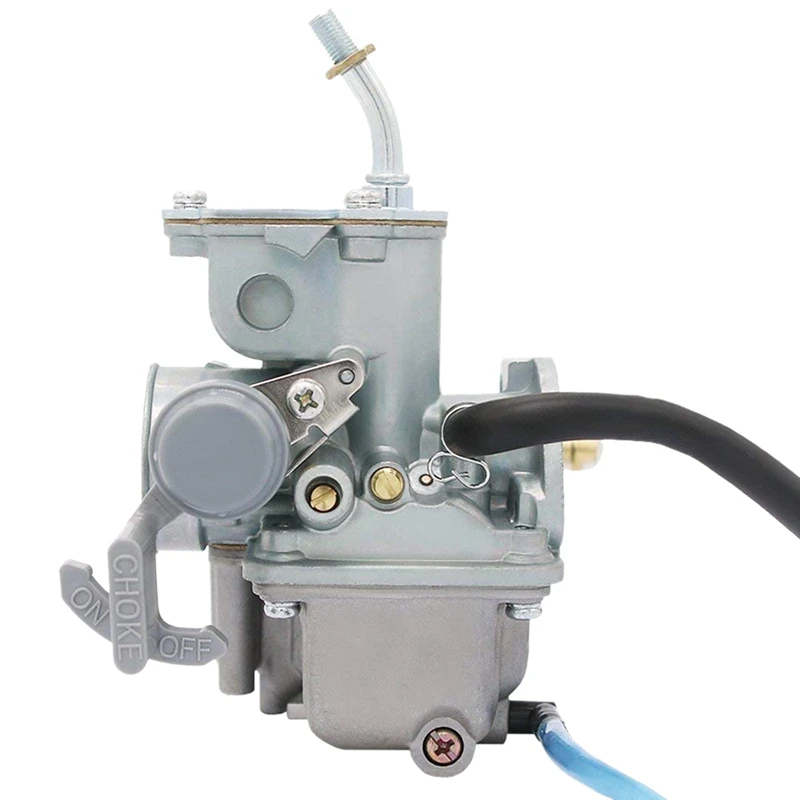
Many riders who decide to buy an inexpensive ATV simply do not spare the technique and ignore this procedure. But even if you plan to change your device in 1.5-2 years, adjustment is needed. The reason for this is increased fuel consumption. A quad with an untuned carburetor "eats" 30-40% more gasoline, and these are tangible costs.
So how do you adjust the carburetor on a Chinese ATV? For this you need:
.jpg?x-oss-process=image/auto-orient,1/quality,q_70/resize,m_mfit,w_350,h_350)
However, it is important to remember that all adjustments are made only with a "clean" carburettor. This means that the rider needs to remove all the dirt from the node and flush the system to remove condensation and sediment from it.
Note: Just before adjusting, the engine must be warmed up to operating temperature.
To set the carburetor idle speed, the float chamber must first be cleared of fuel. To do this, start the ATV, close the fuel cock and wait until the machine stalls (5-10 minutes). To speed up the process, you can take a little ride on the quadric. Of course, gasoline can be drained, but in any case you will have to warm up the device, so the first method of "removing" gasoline is more effective.
Then:
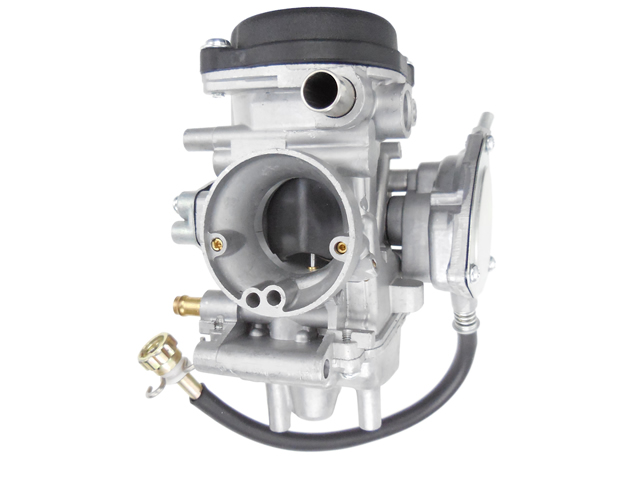
Read the manual before adjusting the carburetor on a 125cc ATV to be sure. Remember that the location of the bolts is different in different devices, so read the documentation in advance.
To evaluate the quality of the fuel composition, make a test run.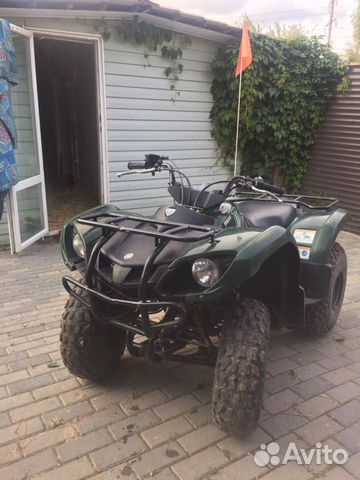 After that, unscrew the candle, and evaluate its condition. If it is:
After that, unscrew the candle, and evaluate its condition. If it is:
Also look out for these “symptoms”: damaged tip (electrode failure), oil deposits (damage to rings and caps), chips and inclusions (sign of motor failure).
To adjust the mixture you need to twist the needle cover and pull it out. To get the needle, pull out the cable. After that, move the ring in the required direction (lower - more air, but less fuel and vice versa).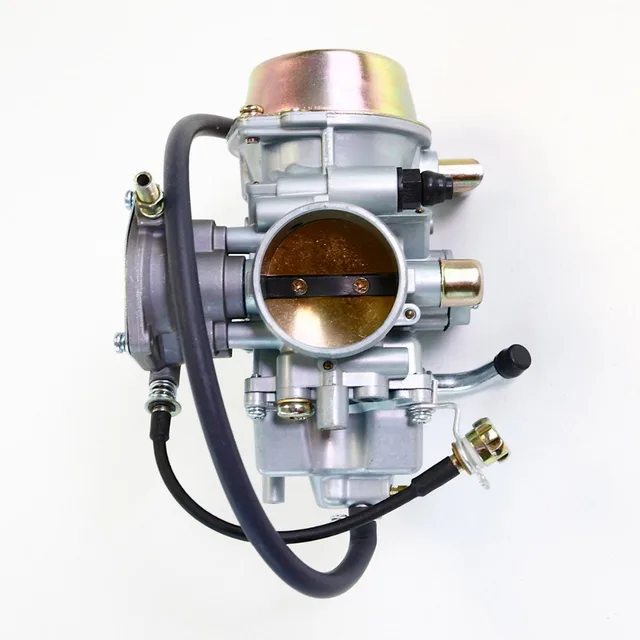 Then start the engine and make sure it doesn't stall.
Then start the engine and make sure it doesn't stall.
The last step in adjusting the 125cc ATV carburetor is adjusting the petrol level. To do this, you need:
Note: Adjust as carefully as possible as system components are very fragile. Ideally, carburetor tuning should be done by a specialist.
06/16/2020 20403
It often seems like an insurmountable task for beginners to tune and adjust the carburetor of an ATV, but in fact, it is far from being the case. Using our instructions, you can easily set up a carburetor with your own hands.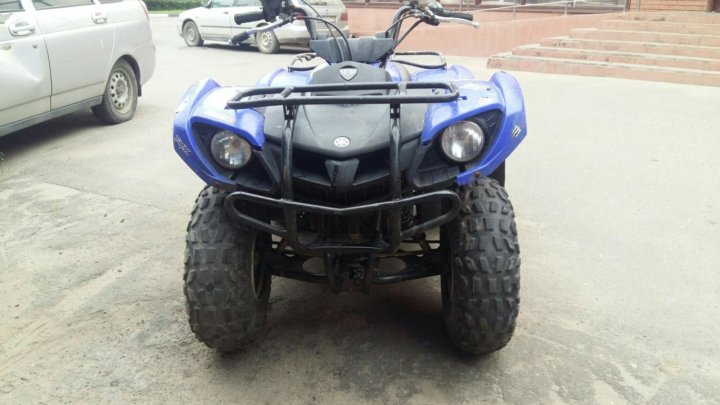
Due to improper carburetor settings, problems such as: failures during acceleration, jerks while driving, uncertain start of the engine, poor acceleration dynamics, overheating, loss of power, increased fuel consumption, formation of deposits in the combustion chamber.
So what exactly are we going to tune?
Attention! The adjustment is carried out under the condition of a warm engine and a clean carburetor.
First, make sure there is no condensation in the carburetor. First, you need to drain the gasoline from the float chamber, for this you need to close the fuel cock and partially unscrew the screw No. 1, after the gasoline has drained from the float chamber, tighten the screw No. 1.
Let's look at photos of candles with various deposits and defects.
A 100% indicator of a correctly adjusted combustible mixture is carbon deposits on a candle.
Consider the location of the screws for adjusting the quality of the mixture and idle speed of carburetors of different models.
#1 Float chamber plug; No. 2 Mixture quality screw;
#3 Idle adjustment screw.
1 - quality adjustment screw at idle; 2 - fuel inlet fitting; 3 - fitting through which you can sleep fuel from the float chamber; 4 - screw-plug of the float chamber.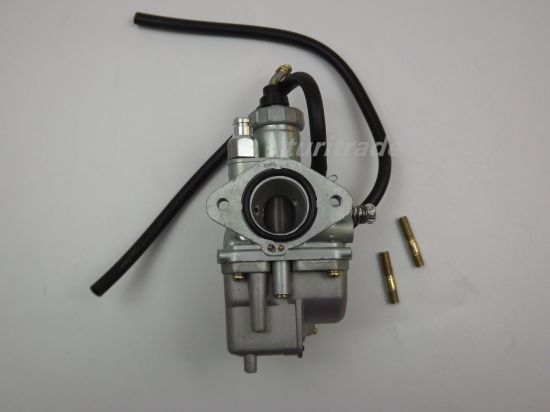
1 - ventilation tube; 2 - idle speed adjustment screw; 3 - screw for adjusting the composition of the air-fuel mixture.
ATV carburetor speed and mixture adjustment.
1. Start and warm up the engine until it reaches operating temperature.
2. Adjust the idle screw to set the idle speed to normal. Completely, until it stops, tighten the fuel mixture screw, the engine should stall. If this does not happen, check the tightness of the air supply system from the air filter.
3. Loosen the fuel mixture screw 1 turn. (Turning the screw clockwise, we enrich the mixture, unscrewing it counterclockwise, we lean).
4. Start the engine and, by adjusting the idle screw, set the speed slightly higher than usual
5. Slowly unscrew the fuel mixture screw until the engine reaches maximum speed (we unscrew the screw no more than 2 turns, but depending range may fluctuate due to engine wear and other faults).
6. Re-adjust the idle screw to set the idle speed to normal.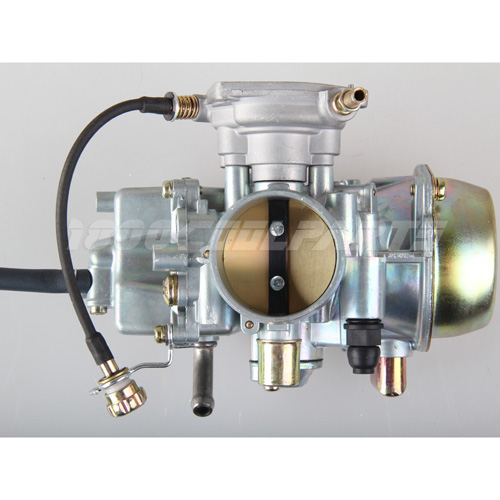
7. Press the throttle trigger several times, check if the idle speed is stable.
Mixture quality adjustment with a needle.
Probably you have heard more than once about adjusting the quality of the mixture on the carburetor by manipulating the needle. I note that these are extreme measures, for the initial adjustment, use the mixture quality screw, and only if you do not get the desired result, unscrew the mount and remove the needle. What does she represent? This is the main element that regulates the amount of gasoline supplied to the combustion chamber. Connected directly to the throttle handle through a cable. When you turn the knob, the needle rises higher, opening up a channel for fuel, thereby delivering more mixture, which increases power, which translates into speed.
You will see 5 grooves on the needle at the attachment point. Initially, the retaining ring fixes it in the central position, this is the best option. But sometimes it is not possible to achieve the required quality of the mixture.